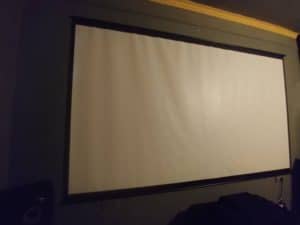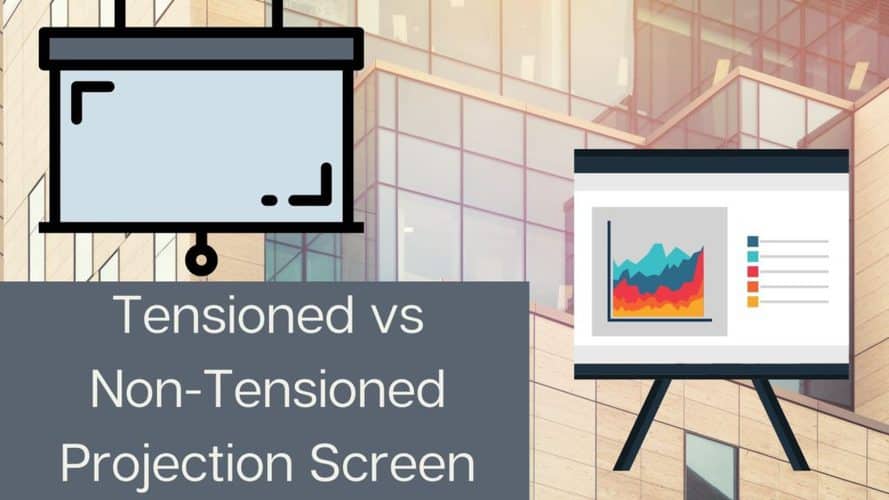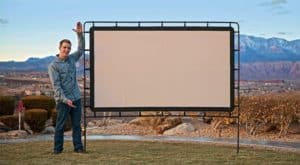Projector screens without tensioning tabs are often made quite of quite a bit poorer quality materials than the tensioned screens. Due to this they are quite a lot less expensive, but don’t let the price win you over as they aren;tas durable and don;t last as long.
This causes a need to buy more than just one screen and will be the same price, if not more expensive in the long run if you do end up going for a non tensioned screen.
Waves are one of the main issues with dealing with a non-tensioned screen, small to large “waves” and creases start to appear due tot he flowing nature of the screen which can make a big difference in your viewing of your projector.
main issues with dealing with a non-tensioned screen, small to large “waves” and creases start to appear due tot he flowing nature of the screen which can make a big difference in your viewing of your projector.
If your projector screen is just hanging from a ceiling mount ten these waves will be fairly prominent as it has nothing to keep it in line and straight.
Non-tensioned screens can have some benefits for certain applications such as if your looking to put your screen on a wall. If you do this then you can use projector screen framing tape around the edges which will act as the tensoning tabs.
This way you don’t need to pay as much money and you will still have the same great outcome!
Another positive for free flowing projector screens is they can be used in ceiling mounts for screens as they don’t have the tabs which often get caught with traditional tensioned screens. You do still need to watch out of the inevitable waves that come with the non-tensioned counterpart.
Projection screens without the tension and everything that comes along with that (tabs, structures) they are much more portable, so if you pair it with a more portable projector it will be much easier for you to haul it around if your screen is flexible and can be packed up much smaller.




 main issues with dealing with a non-tensioned screen, small to large “waves” and creases start to appear due tot he flowing nature of the screen which can make a big difference in your
main issues with dealing with a non-tensioned screen, small to large “waves” and creases start to appear due tot he flowing nature of the screen which can make a big difference in your